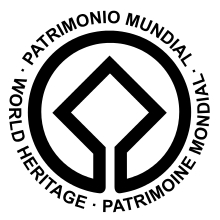yellowstone
a nature paradise
a nature paradise
Our visit
Touché's
'Radio'
Guy's
'Bericht'
click on a photo to start
Lightbox, that lets you see the series of photos one after the other in a bigger size, plus legend.
Grand Tetons - Jenny Lake
The first day in the Grand Tetons, we drove from our Togwotee Lodge to the National Park. We first went to Jackson Lake, a big reservoir that keeps up water for the agricultural lands on the opposite side of the Tetons in green Idaho.
The French trappers that came here in the late 18th and the 19th century called these mountains 'les grands tétons', the big tits. It was a predominantly male community, so some feminine fantasy kept the men happy...
The French king sent his first expeditions to Canada (Québec) in 1534 and 1535. The fur trade (castor or beaver) became important from the early 17th century onward. European trappers traded with indigenous people and set up trading posts along the rivers.
French names seem a bit out of place here, but besides the Grand Tetons, there is a Shoshone tribe called Nez Percé (pierced nose, also the name of a county in Idaho) and East of Jackson Hole lies the city of Dubois, another French name.
Jackson Lake
Jackson Lake is fed by the Snake and Lewis Rivers that we followed downstream the day before. The Snake River then follows the East side of the Tetons all the way down to Jackson, then turns West and flows to Idaho Falls. It continues all the way West to Washington State where it joins the Columbia River. It is more than 1600 km long and should in fact be called Salmon River. The S-like hand movement Shoshones make to represent swimming salmon was misrepresented as being a snake...Jenny and Leigh Lake
We continued to the Jenny Lake Visitor Center and started out for a short hike in the direction of Leigh Lake. The lakes are named after fur trapper 'Beaver' Dick Leigh (from England) and his (Shoshone) wife Jenny, who assisted the Hayden expedition that explored the region in 1872. Signs warned that bears might be wandering in the neigbourhood, so we once again started to sing and make noise while advancing along the trail (see Bears page).Indian exhibition at Moose Visitor Center
After our Jenny walk, we continued by car South over the Flats to the Moose Visitor Center and tried to find the exhibition about the Indians that lived in this region. It turned out that the exhibition consisted of only a few windows with artefacts in a part of the Center. We had expected something more consistent...On the other hand, even if it was rather small, the exhibition about the Native Americans in the Tetons was quite interesting and comprehensive. It showed how the Indians made clothes and utensils, how they used plants to make colours, and coins and other materials brought to the region by the Europeans to make ornaments, etc.
After seeing the Indian exhibition we rode back home. On the way, we saw our second elk male, that was quietly grazing somewhere off the road.
